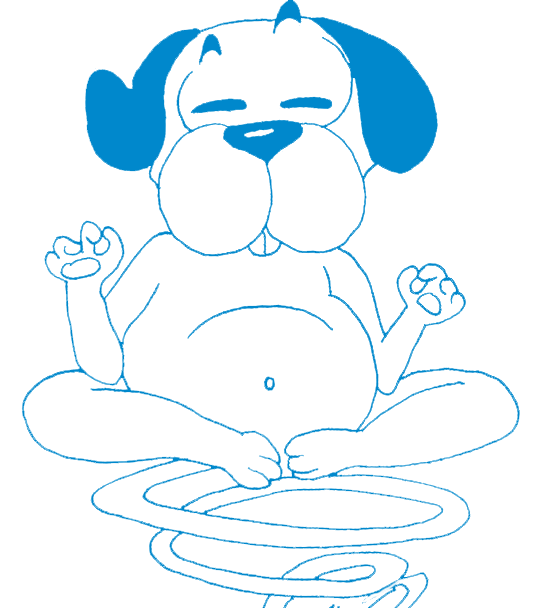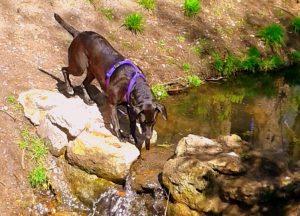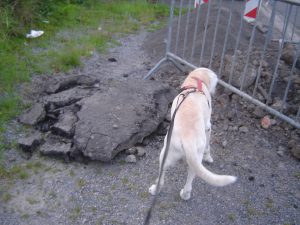A diary
Keeping a diary of activities is interesting, at least initially. It allows us to note the activities we offer (walks, search games, places to explore, resourcefulness games,…), but also the reactions of our dogs (excited, relaxed, hesitant, fearful, reactive,…).
We can check on the one hand that the activities are varied (different places to walk, meeting strangers, variations of games and hiding places,…) and on the other hand that the development of our dog is taken into account (he has not become bored/he can manage the progression of the difficulties).
Whatever activities are offered, it is important to let our dog:
- observe and analyse with all his senses,
- take initiatives and decisions,
- take a break if necessary,
- face difficulties.
Observe and analyze with all his senses
All activities involve the activation of the senses (one or all 5 at a time). A walk means: smelling every pole or blade of grass; watching a butterfly fly or a car drive by; listening to birds sing or the wind in the leaves of a tree; feeling the different surfaces of the ground with his paw pads; tasting the water in a puddle or chewing on a piece of wood. To be able to analyse and memorise every element of one’s environment takes time.
During the walk, for example, let our dog walk wherever he likes around us. Perhaps a garden fence or an electric pole will be very interesting. What if that tree had a scent that was still unknown… Let our dogs explore at their own pace, stop, explore again and start again.
|
|
|
Take initiatives and decisions
If a dog finds it interesting to explore our laundry or under a piece of furniture? As long as the dog’s safety is not at risk, let him. A curious dog is a healthy dog!
Take a break if needed
During the walk our dog may need a break. Stopping, nose in the wind, and watching the world go by is a rare pleasure.
While exploring an enriched environment or during a chewing activity, some rest may be welcome.
The same is true during a resourcefulness activity: there is no need to insist that the dog should continue. Can we force someone to concentrate? No! However, taking a break and then resuming the activity is the ideal solution. Let’s do the same for our dog.
Facing difficulties
We tend to protect small dogs, which we take in our arms and carry from one place to another. These dogs know our arms, neck and chin very well. But what do they know about the rest of the world?
A fearful dog evokes pity and, to protect him, we keep him away from anything that gives him difficulties. If we organise activities, taking care to give our fearful dog enough time and space, he learns by himself that he is capable of doing things. Each small victory is then a reward for our dog, who gains a little more self-confidence, as the difficulties he has managed to overcome are overcome.
For the activities and games that we organise, it is important to evaluate the level of difficulty by adapting to our companion’s abilities: exercises that are too difficult lead to failure after failure and risk making our dog lose his self-confidence, whereas exercises that are too easy and lack challenge can frustrate our dog. It is up to us to choose what suits him best, physically and mentally.
TAKEAWAY
- Keeping a diary can help us organize adapted and varied activities;
- Vary the fun activities, while taking into account the development and the rhythm of our dog;
- A curious dog is a healthy dog;
- Breaks are allowed and beneficial;
- Balanced activities for a balanced dog.



